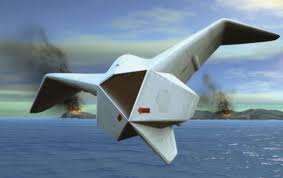The Robotization of War: American Drones kill first, ask later


As ongoing drone strikes from American officials continue to raise questions both home and abroad, a new report suggests that those with perhaps the fewest concerns for the missions are the very authorities that approve them.
According to a report published in the Wall Street Journal, a large number of the unmanned strikes carried out by robotic American drone aircraft are launched without officials identifying the targets of the plane. Rather, groups of men that are suspected of being associated with terrorist groups are fired upon in hopes of eliminating the enemy.
The Journal writes that those attacks, called “signature” strikes by the CIA, make up the “bulk” of the Central Intelligence Agency’s drone missions. Signature strikes were first used under President George W Bush and continue under the Obama administration despite opposition from Pakistani authorities. An US counterterrorism official speaking on condition of anonymity to the Wall Street Journal says that double the number of wanted terrorists have been killed using signature strikes as opposed to attacks that signal out specific targets, “personality” strikes, but information about the death toll stemming from either is scarce outside of what the CIA offers publically.
American personnel claim that drone strikes in Pakistan have only taken 60 lives since the operations began a decade ago under President Bush. Other agencies are quick to criticize that statistic, however. In a report issued this summer by the Bureau of Investigative Journalism out of London, they make claims that at least 385 of the casualties caused by unmanned robotic America drones were of civilians. Actual casualties, say the Bureau, are at least 40 percent higher than previously reported by the US government.
Signature strikes are still carried out today despite growing opposition of American military action from Pakistan. After the unauthorized raid in May that killed former al-Qaeda leader Osama bin Laden, Pakistanis have become more angered than ever over ongoing American operations in Pakistan. As the US continues its War on Terror, however, the deaths continue to add up.
Last month a strike in Yemen took out two American citizens suspected of having ties to al-Qaeda. With upwards of hundreds of civilians losing their lives on multiple front now, is it worth pursuing these missions?
“The question is, ‘Is it even worth doing now? We’ve got the key leadership in al Qaeda, what is it that we’re there for now?” one White House official tells the Wall Street Journal he overheard during internal meetings.
In 2011 so far, the United States has launched more than 50 drone strikes in Pakistan alone — despite being ordered off of bases by the country’s Defense Minister. Operations are far from limited to just Pakistan and Yemen, however; US drones carried around 23,000 spy missions in the first nine months of 2011 and airstrikes in Libya between April and November totaled 145.
It’s expected that even with the assassination of Gaddafi, drone strikes worldwide offered up by Americans will carry on. A Washington Post report from September 2011 alleged that the CIA was constructing drone bases in the Arabian Peninsula and the Indian Ocean archipelago nation of Seychelles to increase the number of strikes overseas.
Meanwhile, strikes will continue in Pakistan where the current plan is to act first, ask questions later. Under current drone strike policies, the latest report reveals that the White House is rarely asked for approval for CIA-led strikes. Instead, rather, Obama and company are only informed of attacks after they occur.
And as for Pakistani officials that are subjecting to ongoing American presence as the War on Terror continues? Current mandates, revealed now by the Journal, suggests that the CIA only must inform Pakistan of its signature strikes in advance if it believes it will kill more than 20 militants.

